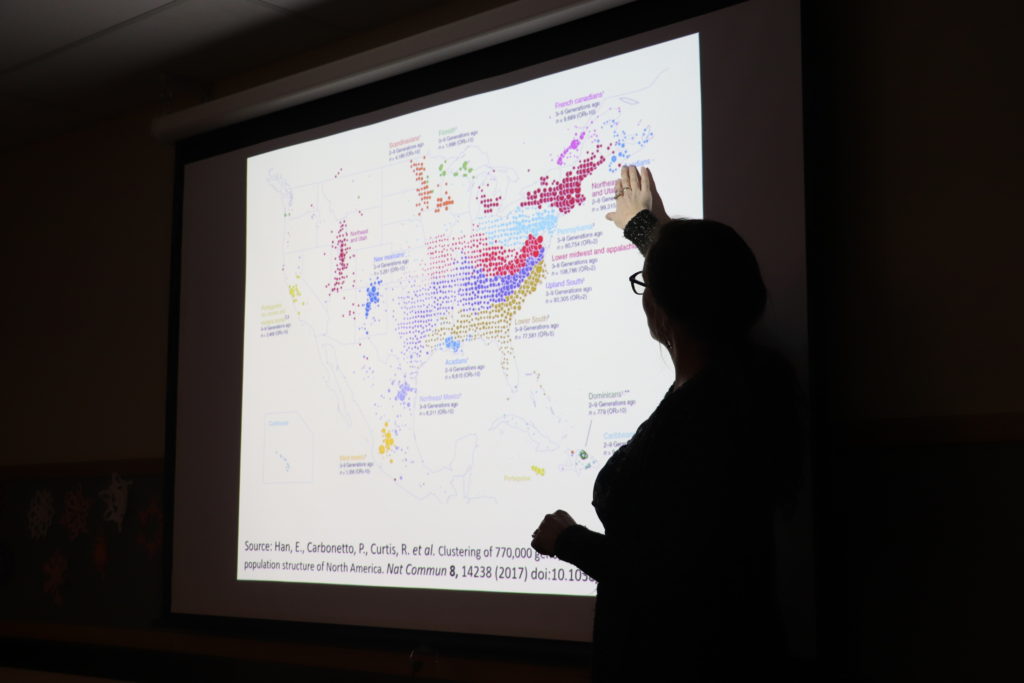With renovations recently completed and equipment still unboxed, the state of Carleton University biology professor Catherine Cullingham’s lab suggests there is something unprecedented about the work she will be doing in the Nesbitt Biology Building.
Officially opened on Jan. 15, Cullingham’s lab will focus on conservation genetics–a new form of environmental science using species’ genetic differences to prevent wildlife extinction.
“I’ve been looking at how mountain pine beetle infestations in Alberta and British Columbia are affecting different species of pine,” Cullingham said.
“We can use information about the genes of the unaffected trees to determine what makes them better defenders against bugs.”
A different approach
Cullingham’s project began by using genetics to identify the species of pine affected by the beetles, a common practice among wildlife conservationists, said Christina Lawrence, resource management officer at Point Pelee National Park.
“Point Pelee has about six species of at-risk trees,” she said. “There’s a tree called white mulberry, which is an invasive species introduced from Asia. It can hybridize with red mulberry—one of the at-risk trees—and threaten the pure red populations.”

Cullingham presents her research. [Photo by Pascale Malenfant]
Although tree species can be identified by other characteristics, using genetics can be more effective because it assures scientists they are targeting the right species, added Lawrence.
As part of Point Pelee’s “Diversifying Diluted Genes” initiative, Lawrence’s team was able to use the genetic information about different trees in the park to aid their controlled pollination project.
“Before we invest in the process and the seedlings that come out of it, we want to make sure there’s no contamination from the white mulberries,” she said. “With genetics, we can check to make sure we’re using red mulberry pollen on red mulberry flowers.”
Cullingham’s work seeks to expand on this existing genetics conservation strategy of identifying species. By analyzing specific variations in species’ DNA, Cullingham hopes to find out why certain trees within the same species have more difficulty recovering from infestations than others.
“Let’s look at populations that are adapted to these problems, and let’s make sure we protect those specific adaptations,” Cullingham said of genetics researchers’ approach to the work.
By encouraging the reforestation of affected areas using trees with these adapted genomes, conservationists could ensure the survival of the entire species is done more effectively, added Cullingham.
“You don’t want to be repopulating forests with seeds from trees that don’t have those genomes. Otherwise, you’re trying to repopulate forests with trees that are just going to end up the same way as their parents—infested by beetles.” — Catherine cullingham, Carleton Biology professor
Though this form of conservation genetics has yet to become common practice in the field, Cullingham said she hopes continued resource investment into conservation genetics research will change this.
Investing in science
According to Cullingham, Carleton has invested over $150,000 in equipment and start-up funding for her lab, garnered from the university as well as external government and academic sources.
Cullingham said she also plans to apply for grants, including grants offered from the Natural Sciences and Engineering Research Council, which can provide anywhere between $70,000 to $350,000 in a five-year period.
However, direct financial support is only one aspect of the school’s efforts to integrate new professors and labs into their research environments, said Owen Rowland, chair of the biology department.
Science communication, Rowland said, is another aspect he emphasizes for success in earning research awards.
“Much of our research—if not all of our research—is funded by taxpayers, whether it’s coming from federal granting agencies or provincial granting agencies,” he said.
“So it is very important to tell them what we’re doing, why we’re doing it, and what the implications are for them directly or indirectly.”
Student research
One of the most significant contributions Cullingham’s lab will bring to Carleton is student research opportunities, continued Rowland.
“Having a new lab—particularly in an area that we haven’t covered before—gives additional opportunities for students to conduct research in their interests,” he said.
While the department will help Cullingham attract “the very best” graduate students both at Carleton and elsewhere to conduct her research, Rowland said creating undergraduate opportunities in the department’s labs is equally important.
“A very important value in Carleton biology is giving undergraduate students the opportunity to do actual research in research labs, to get that experience to become actual scientists themselves,” he said.

Carleton invested $150,000 into the lab. [Photo by Pascale Malenfant]
Cullingham’s work has already attracted the attention of students on campus.
Caitlin Hubbard-MacLeod, a third-year biology student who has been volunteering with Cullingham since August 2019, said she is looking forward to the hands-on experience she will gain this summer.
“I’ve always been really interested in the lab-based work, and I feel like it’s going to be really fulfilling to feel like you’re doing something really concrete,” she said.
Working alongside other students, added Hubbard-MacLeod, is a unique aspect of academic labs that can enhance the research experience.
“Being in school, you’re taking a lot of different classes in a lot of different subjects,” she said. “You kind of get used to synthesizing all this different background information you have for problem solving, pattern recognition, or trying to fit pieces together that you might not have thought of before.”
Cullingham said she plans to finalize her student research group this summer, although it is unclear how many spots will be up for grabs for eager student researchers.
Feature image by Pascale Malenfant.






